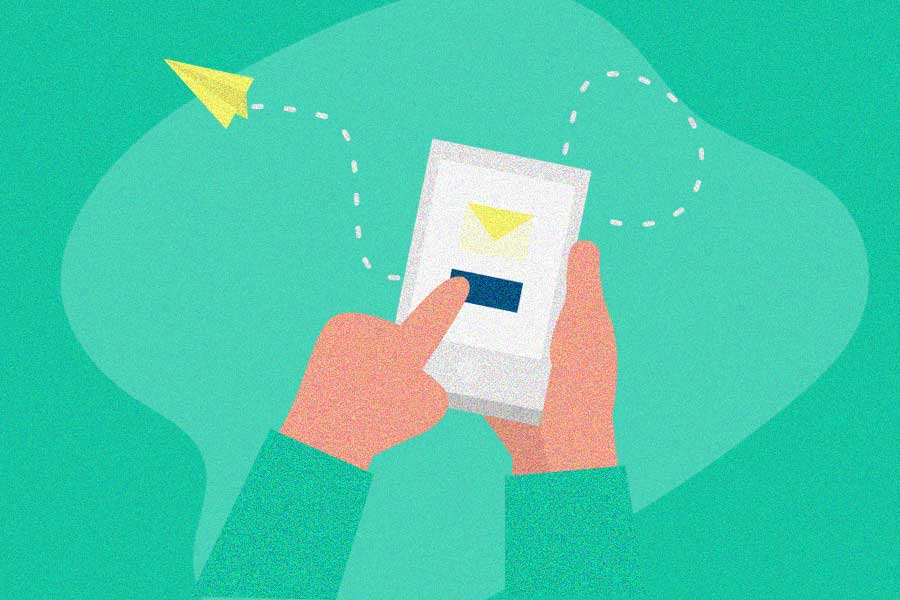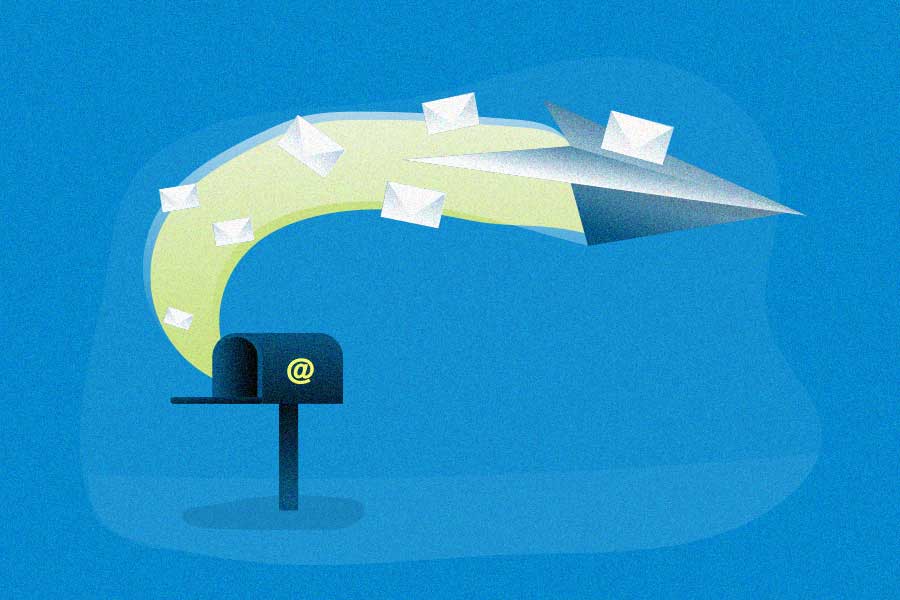Referral rate shows the rate of purchases that result from your referral program. By measuring your overall referral rate, you can identify how well your referral program is working and where to focus your efforts.
Based on our experience helping thousands of companies optimize referral programs, we’ve created this referral rate guide. Follow our steps to bring in more new customers and get the most value from your referral strategy.
What is referral rate?
Referral rate measures the percentage of total purchases made that come from referrals – from customers who were referred to your business or product through someone else. This rate is usually calculated per month or year.
For example, if two out of every 100 purchases came from customer referrals last month, then your referral rate for that month would be 2%.
How to calculate a referral rate?
To calculate the referral rate, you will need to know how many purchases have come from referrals over a set time period (e.g. a month, quarter, or year). Once you have that number, divide it by the total number of purchases within that same time period. This will give you the overall referral rate over that period.
You can then calculate other referral rates across different equivalent time periods, and compare the referral rates to measure progress. You can also compare referral rates to purchase rates across other marketing channels.
This is one place where referral software really shines. Referral software tracks all the referrals your customers make – it records who made the referral and when the referral resulted in a purchase. So, it’s convenient and simple to instantly see how many purchases have come from referrals, and find your referral rate.
What is a good referral rate?
A referral rate of 2% is generally considered to be healthy. The global average referral rate across all industries is 2.35%. If your referral rate is close to or higher than this, then you can feel confident in knowing that your referral program is on track.
A few industries have exceptionally high referral rates on average (between 3% and 5%). This includes the SaaS industry.
How to improve referral rates?
Improving referral rates involves three fundamental steps:
- Shares: Encouraging customers to refer more often
- Reach: Getting referred leads to visit your website or page
- Successful referrals: Enticing the maximum number of referred leads to complete their purchases
The more shares you get, the more leads you’ll reach, and the higher your chances are of getting new referred customers. And of course, the more referred customers you have, the higher your referral rates will be!
Here are some of the most effective ways to increase your referral rate, and boost customer acquisition:
Make sure you’re promoting your program well
The number one reason why referral programs fail is a lack of consistent promotion. If people don’t know about your program, they won’t share. That’ll cut down your reach and reduce the number of referrals you stand to bring in.
Promoting your program is vital to keep referral rates healthy!
Divide your promotion strategy into two types of referral promotions: direct and indirect.
- Direct promotions are completely focused on promoting your referral program, with a clear ask for a referral. Emails and social media posts dedicated to asking for referrals are some examples.
- Meanwhile, indirect promotions take place within communications not fully dedicated to your program – through methods like email signatures, transactional emails, and newsletters.
You should be promoting your referral program through a mix of the following ways:
- On your website, including a banner on your homepage, a dedicated landing page, and numerous links
- In mass emails focused on your program
- In personal referral emails sent to your most loyal and satisfied customers
- In newsletters, update emails, confirmation emails, and other emails unrelated to your referral program
- Through social media posts (consider shouting out top referrers for added social proof!)
- In email signatures and social media bios
- On your thank-you page (right after a purchase)
- In your customer portal (if you have one)
- On social media platforms like X (Twitter), Instagram, and Facebook
- In-store (if applicable)
Offer attractive rewards
It is absolutely essential to offer referral rewards that are attractive enough to entice your customers to refer leads, but that are still friendly to your budget. Think beyond the cash referral fee – you can also offer other rewards that are tailored to your brand. Rewards that tie back to your brand include store credits (gift cards), free products, service upgrades, swag, and exclusive bundles.
It’s also a good idea to simply poll or ask customers what they would like to receive as a reward and tailor your rewards program to both their needs and yours. You might even consider a tiered structure, where rewards increase in value the more referrals someone makes.
Make incentives double-sided
Both the referring customer and referred lead should be highly motivated to participate in your referral program. It’s not enough for just existing customers to be incentivized to make referrals; you must also offer something of value to your referred leads to encourage them to complete their purchases. This could involve offering discounts, free trials, or other enticing promotional offers that apply to the first purchase.
Craft referral emails that get to the point
To motivate maximum sharing, referral emails need to get to the point quickly. The first thing customers will see when they receive a referral email is the subject line. It should be concise, and should include the reward to motivate email opens.
The next component of the email they’ll see is the headline. This should tell customers what to do (refer) and why (receive the reward).
Keep the body of the email short and sweet, and address the customer by name to add a personal touch. The body of the email should simply explain how the referral program works in no more than three or four bullet points. And be sure to include the unique referral link. Placing the customer’s referral link right in the email can make the referral process easier for customers while drastically increasing click through rates.
Including an eye-catching hero image that shows the reward being offered, and that fits with your brand, can help drive home the point. The hero image could also show friends having fun and connecting with your products.
Finally, add a CTA above the fold that’s easy to pick out, and that directly states what you want the customer to do in a few words (e.g. “share now” or “get $10”). Make the CTA button a color that stands out from the rest of the email.
Referral Rock’s One Click Access links make it as easy as possible for customers to join your program via an email promotion. When customers click these direct links, they’re instantly signed up for your program (no password needed).
We recommend including One Click Access links in all emails you use to promote your program, both direct and indirect. Use our Program Link Builder to instantly embed One Click Access links in emails, sent with your platform(s) of choice.
Use timed email reminders strategically
Reminding customers to refer friends or family on a consistent basis, but not too often, is another effective way to increase referral rates. We recommend sending dedicated monthly emails to all customers within the first year of the program, and quarterly emails (every three months) after the first year. Of course, that’s in addition to indirect promotion in emails like newsletters.
-
Referral Rock data shows that 30% of shares come directly from emails.
-
This highlights the importance of ongoing referrer engagement, as most of the emails are sent after the program is first launched.
The right referral software will automate email sending for timely customer reminders, to help keep the program top of mind without being overwhelming.
Referral Rock makes it easy to set up event-based triggers, which send promotions to customers who purchase, renew a subscription, or take another action that shows they’re satisfied.
Personally ask customers to refer
There are several effective ways for personally asking customers to refer your products or services. One method is to send repeat customers a personalized letter that invites them to join your program and offers a heartfelt thank you for their consistent support. You could even provide insights into how they have helped your organization grow since they first became a customer.
When sending a personal message:
-
Have a reason to reach out (time it for a key moment when they’re likely to share, like right after a purchase)
-
Be specific about who’s a good referral fit (i.e., the characteristics of an ideal referral)
-
Explain your program concisely
Another way to ask customers for referrals is to reach out post-purchase, whether that’s via a thank you page or in a confirmation email. Here you can thank them for their purchase, remind them of the reward they will receive if they refer someone else, and provide an easy link to share your company with others.
With Referral Rock, you can send a Monthly Summary email that gives each active program participant a personal overview of referrals they’ve made and rewards they’ve earned within the month. This keeps them motivated to share, and keeps your program right at the forefront.
You might even invite customers to make more referrals right after they earn a referral reward, especially if you have a tiered program. Check out an example of this type of email from Morning Brew:
Try making referring a game
Gamifying your referral program is an exciting way to organically increase engagement. This could include running referral contests, rewarding top referrers each month, or hosting drawings for a big-ticket item in which one successful referral equals one entry.
Make sure to add some game-like elements, like leaderboards and progress bars, for customers to track their referrals. Additionally, you could create a special referral page with animations or other visuals to make the experience more fun and rewarding.
Optimize the friend’s experience
The message the referred friend receives through your program is often their first impression of your brand, so you want to make sure it’s a good one. You should mention the referrer’s name somewhere in the message to build trust, and try to make the whole message feel like it’s coming from a peer. Ideally, at least part of the message should be in the referrer’s own words (a personalized, typed message that the referrer adds before sending to a friend).
This is also where you will show the rewards that their peer has sent them, and cover the main selling points that make your brand great. But be sure to do this concisely, in a conversational way, and from the referrer’s perspective – you don’t want to sound salesy. As with other crucial communications, it’s important to include an eye-catching CTA above the fold that encourages the friend to take action and make that first purchase.
Consider A/B testing
An often overlooked aspect of referral programs is A/B testing different aspects to find out what works best. This should include testing different variations of your messaging, copy, and layout on both the referrer’s end and the friend’s end. After measuring and comparing the results, you can then apply the changes that offered the best results across all messages. A/B testing is most powerful when carried out as a continuous process. Regularly adjust your program based on your findings and monitor it to ensure maximum performance.
How referral software can boost referral rates
Referral software is critical when it comes to boosting your referral rate. The right referral software will automate engagement emails, making promotion a breeze while motivating more referrals. It also streamlines reward fulfillment, to ensure that customers are happy and primed to keep referring your brand. Referral software can even simplify the design process, allowing you to make changes to templates quickly and easily to improve referral rates, without having to learn any complex design software or code.
Aside from all of the time-saving automation, referral software provides you with the data to see if your referral rate and other metrics have improved. This way, you can find out what’s working and what needs to be changed on the fly, making it easier than ever to boost your referral rate.
Referral Rock software automates referral engagement, data collection, reward fulfillment, and more for a best-in-class experience that improves referral rates and lets you scale rapidly. No developers needed!
Other referral program benchmarks to measure
Referral rates don’t tell the whole story of your referral program’s performance. You’ll also want to track these metrics for the most accurate picture of how your referral marketing program performs:
- Conversion rate, or the percentage of referral link clicks that result in a purchase
- Share rate, or the percentage of customers who use your referral program to share
- Referral sales, or the number of referrals sent to your salespeople
- Average purchase value from referrals vs. non-referred customers
- Average time of customer retention for referrals vs. non-referred customers
- Average customer lifetime value from referrals vs. non-referred customers
- Total value of all referred purchases
- Total percentage of overall revenue attributable to your referral program
These referral marketing statistics will help you get an understanding of how each referred customer is impacting your business and the overall success of your referral program.
Key takeaways
Whether you run a large ecommerce business selling physical products or a small SaaS startup, referral programs are an effective and low-cost way to grow your business, but they don’t just happen. It takes a carefully crafted marketing strategy, thoughtful design, well-planned promotion, and the right referral software to maximize referral rates.
Utilizing referral software automation and tracking the proper KPIs can help you to create a successful referral program that drives word of mouth, grows your customer base, and significantly boosts revenue.

![Referral Rate: 9 Ways to Improve It [+ How Referral Software Boosts Referral Rates] 1 referral rate formula](https://referralrock.com/blog/wp-content/uploads/2023/05/referral-rate-formula.png)
![Referral Rate: 9 Ways to Improve It [+ How Referral Software Boosts Referral Rates] 2 referral rate stats](https://referralrock.com/blog/wp-content/uploads/2023/05/referral-rate-stats-a.png)
![Referral Rate: 9 Ways to Improve It [+ How Referral Software Boosts Referral Rates] 3 gold's gym twitter referral promo](https://referralrock.com/blog/wp-content/uploads/2023/01/golds-gym-twitter-referral-promo.png)
![Referral Rate: 9 Ways to Improve It [+ How Referral Software Boosts Referral Rates] 4 Postable referral email](https://referralrock.com/blog/wp-content/uploads/2019/06/refer-your-friends-and-get-e1586295620809.gif)
![Referral Rate: 9 Ways to Improve It [+ How Referral Software Boosts Referral Rates] 5 omsom referral landing page](https://referralrock.com/blog/wp-content/uploads/2016/09/omsom2023-1.png)
![Referral Rate: 9 Ways to Improve It [+ How Referral Software Boosts Referral Rates] 6 Little Spoon referral email](https://referralrock.com/blog/wp-content/uploads/2019/06/2019-11-05_13-10-29-e1586305165656.png)
![Referral Rate: 9 Ways to Improve It [+ How Referral Software Boosts Referral Rates] 7 brain fm reminder email](https://referralrock.com/blog/wp-content/uploads/2021/04/brain-fm-reminder-email.png)
![Referral Rate: 9 Ways to Improve It [+ How Referral Software Boosts Referral Rates] 8 australian ethical thank you two](https://referralrock.com/blog/wp-content/uploads/2022/10/australian-ethical-thank-you-two.png)
![Referral Rate: 9 Ways to Improve It [+ How Referral Software Boosts Referral Rates] 9 morning brew consider us impressed](https://referralrock.com/blog/wp-content/uploads/2023/07/morning-brew-consider-us-impressed.png)
![Referral Rate: 9 Ways to Improve It [+ How Referral Software Boosts Referral Rates] 10 tabbed out progress bar](https://referralrock.com/blog/wp-content/uploads/2023/05/tabbed-out-progress-bar.jpg)
![Referral Rate: 9 Ways to Improve It [+ How Referral Software Boosts Referral Rates] 11 vinyl-me-referral-email-template](https://referralrock.com/blog/wp-content/uploads/2017/02/vinyl-me-referral-email-template.jpg)
![Referral Rate: 9 Ways to Improve It [+ How Referral Software Boosts Referral Rates] 12 a b test](https://referralrock.com/blog/wp-content/uploads/2023/05/a-b-test.png)
![Referral Rate: 9 Ways to Improve It [+ How Referral Software Boosts Referral Rates] 13 why referral rock](https://referralrock.com/blog/wp-content/uploads/2021/04/why-referral-rock.png)



